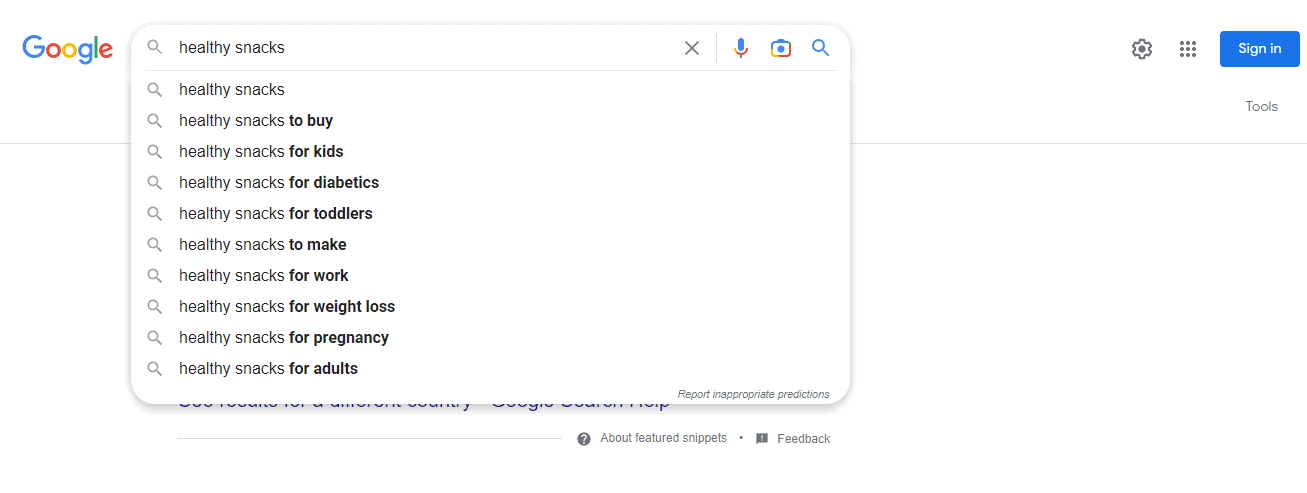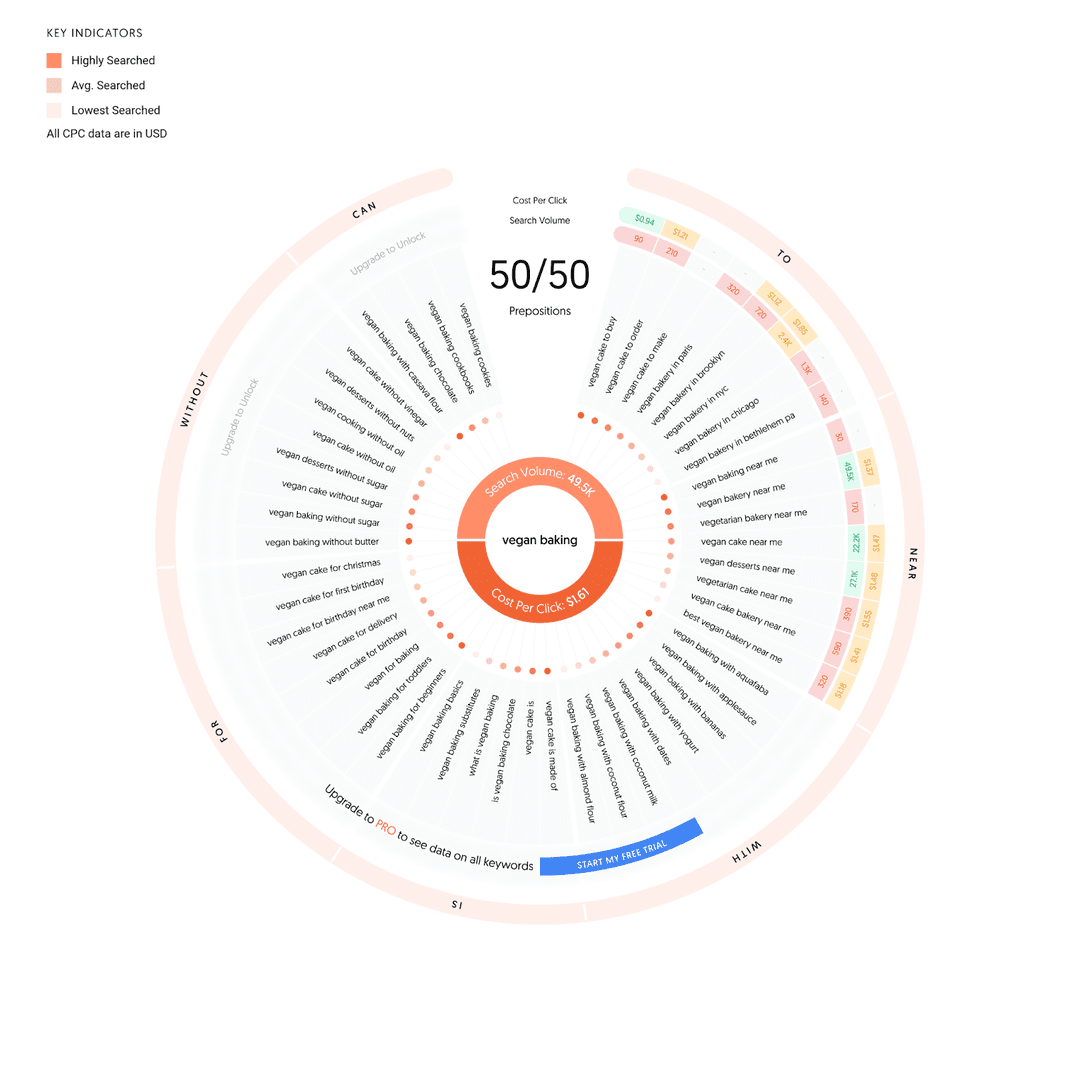
Now that you understand niches, how do you choose a niche market and audience?
Choosing the right niche depends on three key factors. The first is your ability to research. The second is what you’re significantly good at, and the last is the demand in that niche.
Let’s now examine how these factors play out.
How To Find Your Niche Market
1. Start by examining your skills and interests
If you’re creating an ecommerce store, this advice may not apply, even if it can be an advantage. However, previous experience is essential if you’re building a blog, a course, a YouTube channel, or an ebook.
One of the benefits of previous experience and getting skilled in a niche is that you can offer fresh perspectives, anecdotes, and knowledge that may not be available in that niche.
Without previous experience or present interests, you’ll probably be regurgitating what’s already on the internet. So, no competitive advantage of niche marketing.
So, start by examining all the things you’ve done in the past or currently investing time and money in. Your past jobs, passions, and hobbies all count. Then ask yourself which ones you can write on or produce content for regularly without getting bored or tired.
You may have recently transitioned to a vegan diet. That’s a potential place to start from. You may drill down to vegan baking to make it even more specific.
2. Understand Your Target Audience’s Problems And Solve Them
Once you have confirmed that your niche idea is viable, it’s time to build a holistic picture of your target customer.
What you have done up to this point has proved that customers exist for an untapped segment of your industry, but you still don’t know much about those customers.
This step is all about connecting with your potential customers on a deeper level to understand their demographics and the features they want from your product or service.
The best way to do this is to develop a buyer persona. It is a profile of your potential customer showing their age, gender, profession, income, interests, favorite social platforms, hobbies, and other information.
The information you get will help you design a product that best addresses the needs of your customer. It will also help with brand messaging.
You would have gained a deep understanding of what resonates with them, so you will be able to tailor your marketing tactics appropriately without wasting marketing dollars.

For example, Malenki Shoes is a niche brand that sells stylish heels built for petite women.
The company’s founder noticed that women with small feet were forced to wear children’s flats or make do with improperly-sized shoes and then set out to meet that need.
Today, the company has a loyal customer base, and it has been particularly successful with influencer marketing.
3. Establish Your Niche
The goal at this stage is quite simple; study your target market to find a pain point that has not been addressed by existing products and services or inadequate solutions that are currently catering to that.
Get to know your customers intimately, are there prospective customers that want something more affordable, a more premium product, something that is manufactured using sustainable materials, or a comprehensive solutions package that solves multiple related problems?
To discover their pressing challenges, go online and browse through social media platforms to see what they are talking about. Check out customer Facebook groups and online chat forums that are related to your industry.
Google Search is another excellent tool that you can use for your research. Type in relevant keywords, then note down the additional keyword suggestions in the search bar’s drop-down list.
Keyword research will show you what people in your target market are searching for, and you should be able to identify needs that are currently unmet by existing solutions.
For example, if you type “healthy snacks” into the Google Search bar, you will get results like; “healthy snacks for pregnant women,” “healthy snacks for diabetes,” “healthy snacks for toddlers,” and “healthy snacks for weight loss.”

Let’s say the market for snacks is currently dominated by businesses offering sweet snacks; you can then develop and sell a niche product that is sugar-free and marketed to that segment of customers searching for healthy snacks for diabetes.
You can use any of the following factors to shape your unique marketing pitch:
- Geographics: you can opt to focus on people in a specific town, state, region, or even a country (Horizon Air regional airline)
- Demographics: with this approach, you will design a product to meet the needs of individuals of a specific age, gender, education, or income level (Girlfriend Collective—activewear brand for women)
- Psychographics: you will focus your product on addressing the unique values or interests of a specific group of people in your industry (Tesla for eco-conscious drivers)
- Price: with this approach, your product will be designed for customers that are comfortable with a specific price point. It could be free with paid add-ons, budget-priced, or premium. (Louis Vuitton luxury goods for wealthy customers)
- Innovation: your product will be designed and built to vastly exceed the quality and capabilities of existing solutions (the original iPhone which changed the mobile phone market)
Check your potential niches on Google Trends
Google Trends shows you keyword search interest from around the world. You can use this tool to find some trending niches.
For example, the image below shows the search interest in the term “pregnant clothes” in the United States in the past 12 months.

One of the things you’ll notice is that search interest rarely dips below 50. When examining a niche, you ideally want the audience interest to be in an uptrend or consistent over time.
You can also assess seasonal niches through this tool. Also, a downturn in search interest during a period might be more reason to dig further.
For example, many niches suffered during the lockdown period around the world. So, that’s something to think about.
In the same vein, that period gave a false picture of interest in some niches. So be sure to expand the period to five years.
Use Google Search
Now you must examine if the niche is saturated and if there are potential ways to differentiate yourself from the competition. Searching on Google is one way to do this.
By entering your niche market on Google Search, you may even find potential sub-segments that you can pivot to. The primary goal, however, is to find underserved demand and gaps you can fill.
While entering the search term in the text box, watch out for Google’s suggestions. These are questions users ask that are related to your query. These queries are potential goldmines for gaps in the niche.
For each search, pen down the websites ranking high on the search results. Then, check these websites on Similarweb to suss out your competitors further.
You can see the demography of their website visitors, where they come from, their audience’s online interests, similar websites and competitors, and top marketing channels.
Follow up with keyword research
Dig further into what people are searching for in your niche by conducting keyword research. You can use both Answer the Public and Google’s Keyword Planner tool.
Here’s “vegan baking” in Answer the Public and 50 popular question people are asking:

There are many summaries you can draw from the above image. Firstly, people are looking for where to buy vegan products like cakes and desserts.
If you’re creating a blog, you can compile bakeries that make vegan-baked products in places like NYC, Brooklyn, San Francisco, and Chicago.
If you’re a vegan baker, you can start making vegan products and begin targeting people in these areas with ads.
People are also searching for cookbooks, recipes, beginner guides, and ideas for toddlers.
4. Evaluate The Feasibility Of The Idea
At this stage, you would have selected a niche that you want to target, but before you go further in the process, you must first determine whether there is a large enough market to support your business.
There is no point in dominating a segment of your market if it’s too small for you to achieve profitability. The market must also be large enough for you to grow sales and revenues over time.
You can use SEO tools like Semrush or SimilarWeb to get the search volume for the keywords that inspired your idea. Compare those volumes to that of other representative keywords for existing products in your industry that do sustainable business.
Another thing you must check is whether your niche audience is even interested in your novel idea. The product or service you are pitching must not only appeal to your target audience, it must also solve a problem or satisfy a need.
If it doesn’t offer any unique benefit that customers will be willing to pay for, the new product may flame out, and you would have wasted time and resources.
A customer survey will help you hear from the horse’s mouth whether or not customers have a good reason to buy your new product.
5. Know The Competition
You must study your competition’s strengths and weaknesses so you can identify what your company can do better to make customers choose your brand over other alternatives.
The more you know about your competitors, the easier it will be for you to carve out a distinct niche strategy.
For example, ThirdLove is the only lingerie company that offers bras in 78 different sizes. To set itself apart from its competitors, the company’s founder decided to focus on body diversity as their niche strategy. They have such a wide range of products that anyone can find the best bra fit and size.
They also built their brand image around body positivity, and that message has resonated with hundreds of thousands of loyal customers.
Competitive analysis is very useful when crafting a marketing strategy. It will help you identify valuable information about your competitors, including:
- The social media platforms they are using to promote their brand,
- The strategies they are using to engage with customers,
- And the keywords they target with their content marketing.
6. Dive in!
After validating your niche idea, it’s time to dive in and start creating your blog, course, ebook, YouTube channel, or ecommerce/dropshipping store.
There’ll be a lot of learning and failing forward. Learn quickly and test ideas on a small scale before going big, especially for paid ads on social media.
How to Find Your Niche Audience
Step 1: Analyse The Product Or Service You’re Selling
It all starts with your company. The unique value proposition of your product or service will ultimately determine the kind of people that will respond to your brand messaging.
Ask yourself; who is my product for? Why will they be interested in paying their hard-earned dollars for my offering? What sets my solution apart from other alternatives in the market?
The answers to those questions should help you narrow down your niche market.
For example, let’s say you are planning to start a charter limo service. You will have to decide whether you want to focus on business clients that you will be ferrying from the airport to meetings, or focus on clients in the event circuit that includes parties, birthdays, and weddings.
If your fleet is made up of luxurious, quiet limousines, then it may be ideal for you to focus on corporate transportation. On the other hand, a fleet of stretch limousines and party busses, as well as drivers that know all the fun locations in town, will be perfect for the event circuit.
Generally, a business can set itself apart via the following factors:
- The production quality of its offering,
- The price point of its product,
- And the values that govern its brand principles.
Step 2: See Who Your Competitors Are Targeting
Your established competitors have a foothold in the market because they are meeting the needs of customers.
I am not saying you should copy them and imitate all their strategies. Rather, the goal of your competitor analysis is to identify strengths and weaknesses so that you can do better.
You will be able to use the knowledge gleaned from your research to focus your brand positioning on issues that they are not currently addressing.
Step 3: Use Tools
There are several market research tools out there that can help you gain even greater insights into your niche market.
They include:
- Google Analytics: when connected to your website, this tool will help discover the demographics of your site’s visitors, the pages they visit often, and even their favorite social media platforms.
- Google Trends: another analytics tool offered by Google, it helps you monitor the latest trends in your industry. You will be able to look up trending keywords in your industry that you can use in your content strategy and brand messaging.
- SEO Tools: market analytics tools like Semrush will help you analyze your competitors to determine the keywords they are ranking for, their most popular web pages, and the audience segment that is visiting their websites.
- Social Listening Tools: they help you track mentions of brands, products, and key terms in your industry. This information will help you identify the prevailing sentiments in your target market, the motivation behind those sentiments, and the segment of the market that is expressing such opinions.
Step 4: Build A Profile Of Your Ideal Customer
Everything you have done in steps one to three should have helped you narrow down your target audience.
Now, you must build a complete profile (buyer persona) of your ideal customer so you can understand them more intimately. A deep understanding of your target customers will show you the right way to position your brand on the market.
A complete customer profile should include the following information:
- Profession
- Age
- Gender
- Income
- Education level
- Relationship status
- Geographical location
- Goals
- Challenges
- Hobbies
Wrapping Up
The choice of a niche can make or break your online niche business. The perfect spot is where your passion, interest, or experience intersect with an in-demand market need with low competition.
The critical five steps to identifying a niche include examining your interests and skills, researching potential gaps in the market and your competition, validating the idea with an MVP, and finally diving in.
Do you have any more tips for identifying a niche? I would love to hear your thoughts in the comment section.

